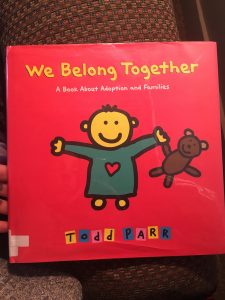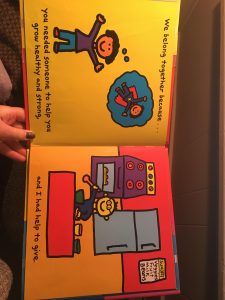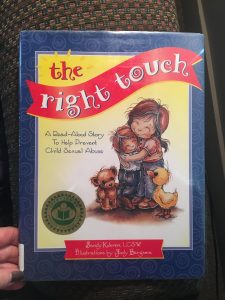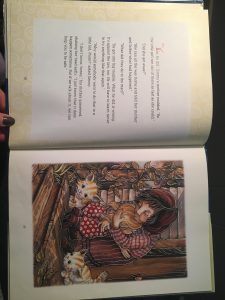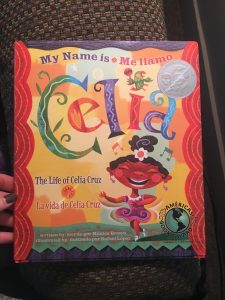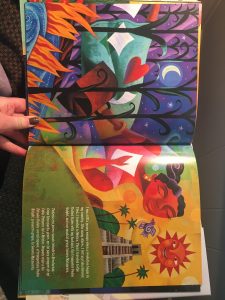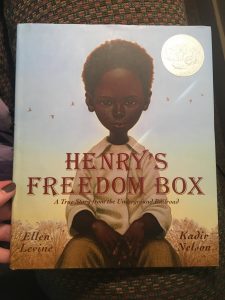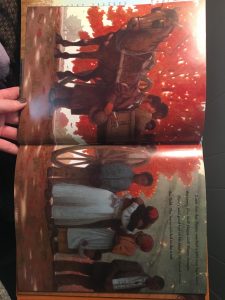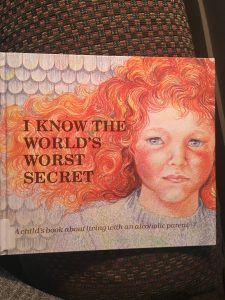
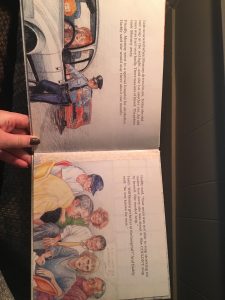
Title: I Know the World’s Worst Secret
Author: Doris Sanford
Illustrator: Graci Evans
Publisher and Year: Multnomah Press, 1987
Number of pages: 28
Tags/Themes: Alcoholism, Picture Book, Emotion, K-5, Family, Olivia Ruff
Genre: Fiction
Descriptive Annotation: The book follows the story of a young girl from her perspective. The child’s mother is an alcoholic, and her family makes excuses for the mother. The little girl assumes many of the roles an adult would have such as cleaning, cooking, and taking care of siblings. The child talks to her “friend” which is a clown doll. The drawings are soft and look as though they were drawn with colored pencils. The advice from the doll is italicized, and there is a list of helpful tips at the back of the book to help children with alcoholic adults in their lives.
Classroom Application: This book would go well in a classroom to talk about difficulties that other children deal with. Children would be able to reflect on new situations that may be very different than their own. This would help students become more understanding of situations that their peers might be involved in.
Linguistic and Cultural Diversity Analysis: The language may be more advanced for early readers, but it is a good book to be read to students who are younger if they cannot read it themselves. Students may be inclined to ask questions regarding alcoholism, and it would be a great way to get students thinking about warning signs and be more aware about issues that alcohol can cause. It is helpful that the story is told from the perspective of a child, as it makes it easier for children to relate to. Quotations: “My mommy drinks Scotch. She gulps Scotch. She drinks a lot of it before she gets drunk” (4) and “Last night Daddy hit Mommy and called her a ‘drunk.’ Mommy kicked Daddy. Laura and I ran next door” (18).

